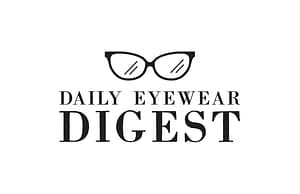Eyewear in 2025 is no longer just about clearer vision or stylish frames—it’s about high-tech biometric intelligence. From tracking eye movement to recognizing emotional states, today’s glasses are becoming tomorrow’s smart assistants. With biometric technology advancing at warp speed, glasses are poised to become a central hub for health monitoring, personal authentication, and digital interaction.
Why Biometric Eyewear Is the Future of Smart Vision
Biometric eyewear blends real-time data capture with user behavior to offer customized experiences. Whether it’s reading your stress levels or controlling devices with your eyes, these next-gen features are revolutionizing how we see and interact with the world. Let’s explore the top 9 features that are reshaping the eyewear industry in 2025.
Feature #1 – Eye Movement Tracking for Cognitive Feedback
Enhancing Focus and Learning with Real-Time Analytics
Modern smart glasses are equipped with sensors that follow your eye movements. This helps users understand how long they focus on specific tasks, making it ideal for learning environments, productivity optimization, and even marketing research. Athletes, students, and professionals alike use this feature to improve concentration and reduce distractions.
Feature #2 – Iris Recognition for Seamless Security
Replacing Passwords with Gaze-Based Identity Verification
Say goodbye to PINs and passwords. With iris recognition, biometric eyewear offers secure, glance-based login systems. From unlocking your phone to accessing smart home devices or even entering restricted zones, your identity can be verified securely and instantly just by wearing your glasses.
Feature #3 – Real-Time Health Monitoring Through the Eyes
Detecting Fatigue, Stress, and Neurological Signals
The eyes are windows to our health. In 2025, biometric eyewear can track eye pressure, pupil response, and blinking patterns to alert users about fatigue, dehydration, or even signs of neurological disorders. These real-time alerts empower wearers to take preventive steps for better well-being.
Feature #4 – Adaptive Lenses with Biometric Response
Automatically Adjusting to Light, Mood, or Focus
No more squinting in sunlight or adjusting focus between screens and books. Smart lenses now adapt based on your environment and biological feedback—switching between reading, distance, and night modes automatically. Some models also factor in emotional cues to reduce visual strain when stress is detected.
Feature #5 – Smart Blink Detection for Device Control
Hands-Free Navigation for AR, VR, and Digital Interfaces
Using subtle blink commands, users can interact with augmented reality (AR) displays, scroll through content, or control wearable devices. This blink-trigger interface enables complete hands-free navigation—perfect for accessibility, gaming, and multitasking.
Feature #6 – Brain-Computer Interface Integration
Thought-Controlled Input through EEG Signals in Eyewear
The fusion of EEG sensors with eyewear is bringing mind-control tech to the masses. These interfaces detect brainwave activity and translate it into digital commands. In practice, users can think to open a message, control drones, or launch apps—all through their smart glasses.
Feature #7 – Personalized Augmented Reality Experiences
Using Biometric Feedback to Tailor Digital Overlays
Your biometric eyewear knows you. It understands where you’re looking, how long you gaze, and your emotional reaction to what you see. This data creates tailored AR experiences—showing you relevant ads, reminders, or educational content based on your needs and preferences.
Feature #8 – Pupil Dilation Tracking for Emotional Analysis
Insights into Mood, Mental Load, and Engagement
Pupil dilation isn’t just about lighting—it reflects how emotionally engaged or mentally taxed you are. Biometric eyewear captures these signals to assess mental fatigue or emotional shifts, providing real-time mood analytics that can be used in therapy, UX design, or human-computer interaction.
Feature #9 – Integrated Biometric Payments and Authentication
Pay and Verify With Just a Look
Biometric eyewear is merging vision and commerce. With eye-based authentication linked to digital wallets, you can authorize payments or verify transactions simply by looking at a terminal. It’s fast, secure, and incredibly futuristic.
Ethical Concerns and Privacy Challenges
While the tech is exciting, it raises concerns about surveillance, consent, and data security. Who owns your biometric data? How is it stored or shared? As biometric eyewear becomes more common, robust policies and transparent practices must accompany innovation.
Industry Applications: Healthcare, Education, Security, and More
Smart biometric eyewear is not just for tech enthusiasts. It’s revolutionizing:
- Healthcare: Real-time diagnostics, patient monitoring.
- Education: Student engagement analysis.
- Security: Instant identity verification.
- Workplace Productivity: Monitoring mental fatigue or alertness.
Frequently Asked Questions (FAQs)
Q1: What makes biometric eyewear different from smart glasses?
A: Biometric eyewear focuses on biological data like eye movements, pupil size, or brain activity, offering personalized, secure, and health-focused features.
Q2: Is biometric data from smart glasses secure?
A: Manufacturers are implementing encryption and local storage, but privacy concerns remain. Users should review data policies carefully.
Q3: Can these glasses detect medical issues?
A: Yes, some models can monitor eye pressure, fatigue, and even signs of neurological issues, but they’re not a replacement for medical exams.
Q4: Are biometric payments through eyewear available globally?
A: They’re being piloted in regions with advanced fintech infrastructure. Global expansion is expected soon.
Q5: Do these features require an internet connection?
A: Some do, like cloud-based analytics, but many features work offline via onboard sensors and processors.
Q6: Will biometric eyewear be affordable?
A: Early models may be premium-priced, but mass adoption and competition will drive costs down by late 2025.
Conclusion: The Future Is Clear—Biometric Eyewear Is Here to Stay
As we move deeper into 2025, the lines between vision, identity, and digital interaction continue to blur. Biometric eyewear is leading this revolution, offering features that were once science fiction. From real-time health alerts to seamless payments and personalized AR, these smart glasses are not just a gadget—they’re a lifestyle. The future of eyewear isn’t coming—it’s already here.

